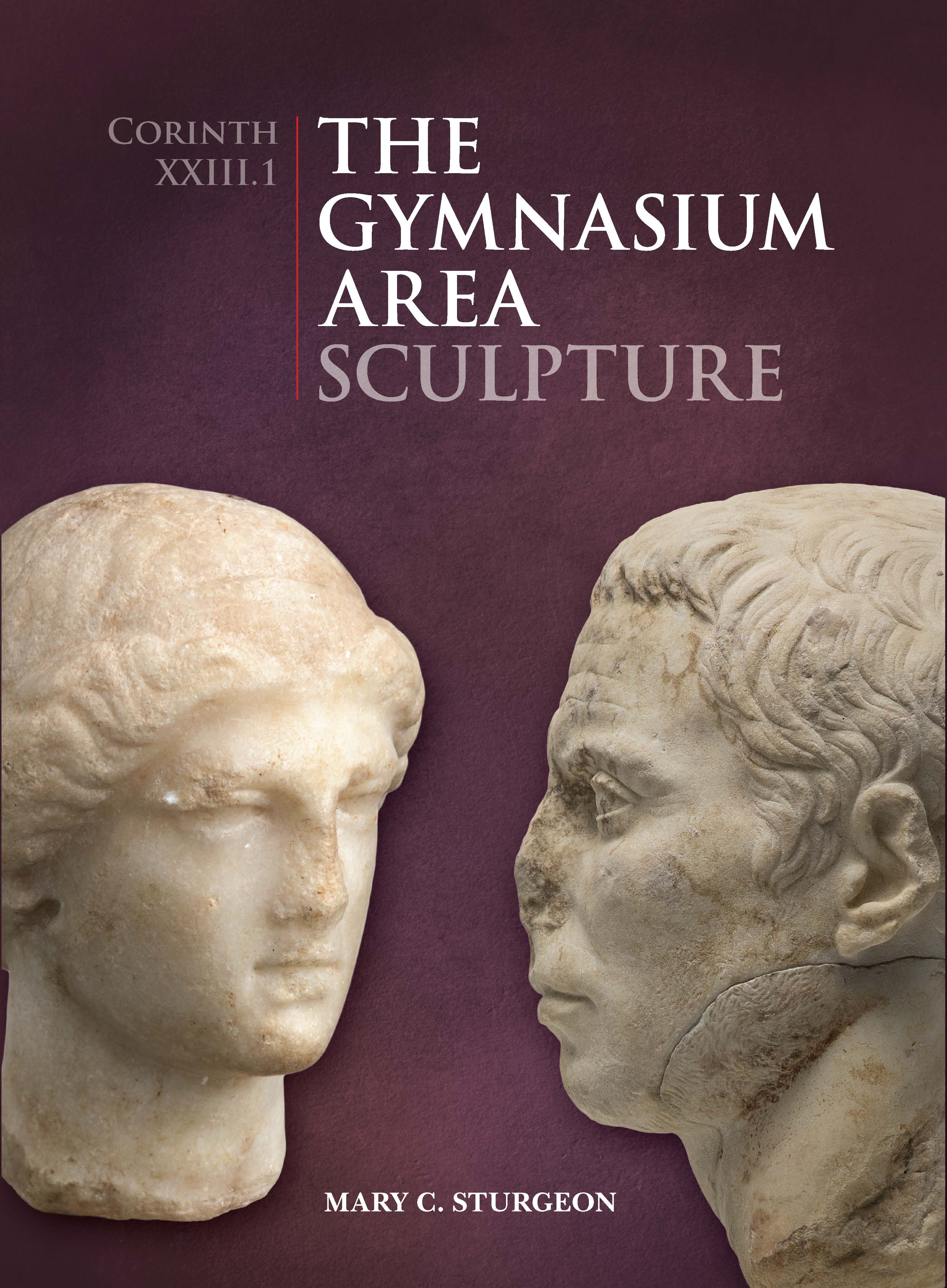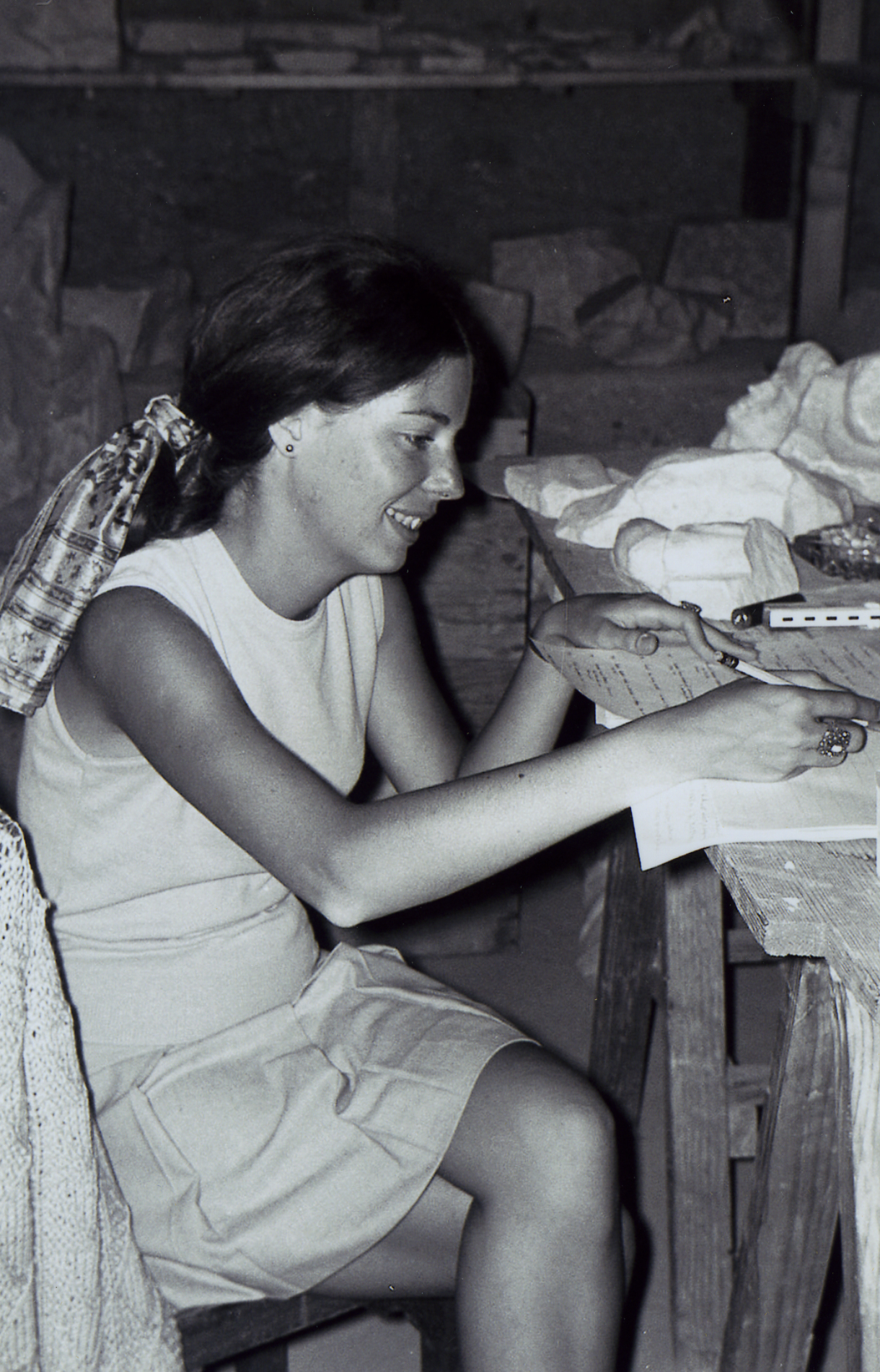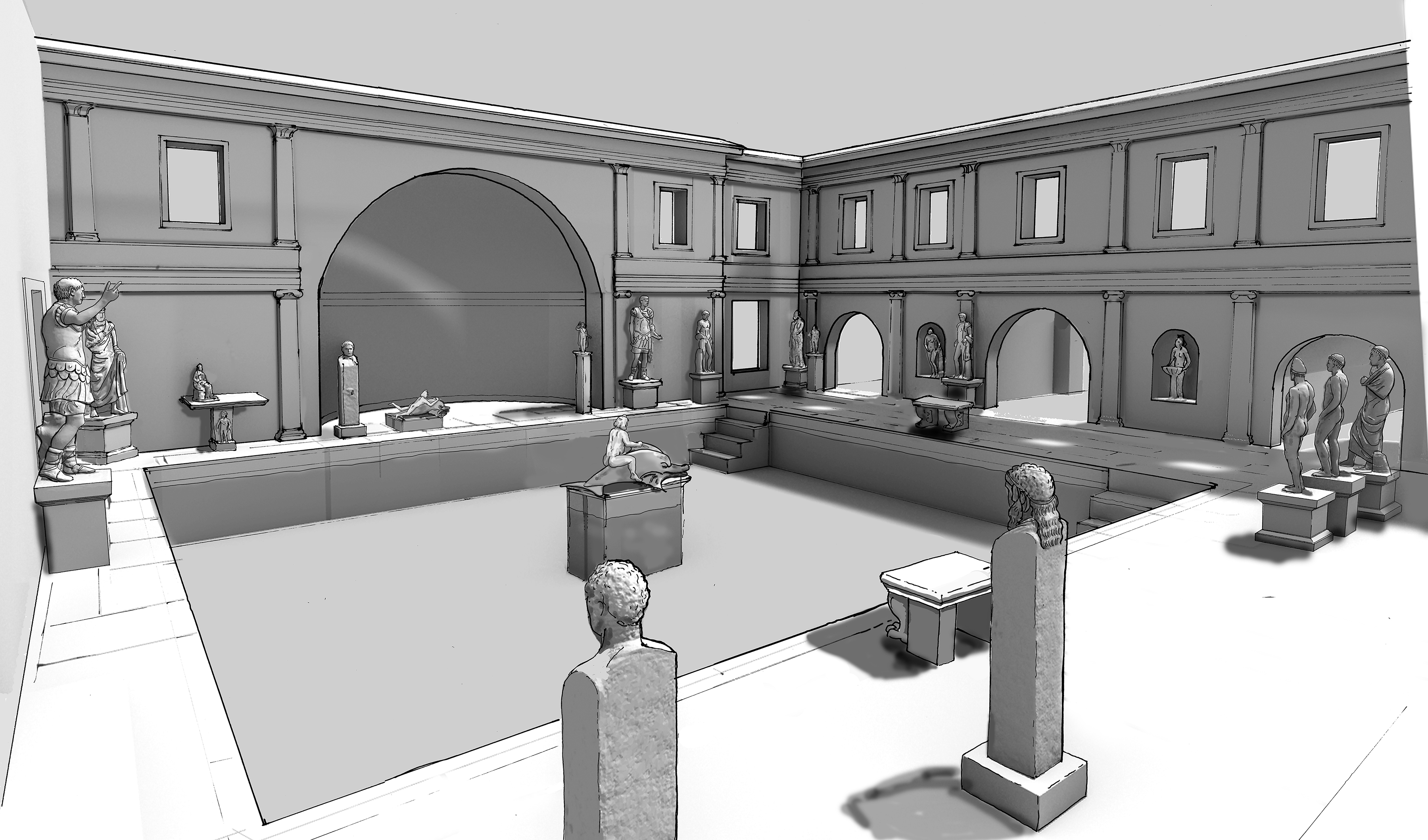
Making a Splash: Mary C. Sturgeon Discusses The Gymnasium Area: Sculpture
 The Gymnasium Area: Sculpture (Corinth XXIII.1) by Mary C. Sturgeon is the newest volume in the Corinth series and the first fascicle of the series publishing the results of excavations from the Gymnasium Area. This part of Corinth was excavated by James Wiseman and his team from 1965 to 1972, with the sponsorship of the University of Texas at Austin. Future volumes on the Gymnasium Area will detail the architecture and stratigraphy of the area and present the glass, inscriptions, lamps, ceramics, burials, and human remains. Sturgeon’s volume introduces us to the Gymnasium Area with a stunning catalogue of sculptural remains dating between the 6th century B.C. and 5th century A.D., many of which were found in and around the ornate Bath-Fountain complex. The sculptural finds preserve portraits of athletes and civic officials and depictions of Aphrodite, Dionysos, and Hermes, in addition to statue bases and herms. Through an exploration of display context, reuse, and deposition, Sturgeon reveals how this assemblage greatly advances what we know about sculptural practices at the Roman colony in Corinth, an important locus of the ancient eastern Mediterranean.
The Gymnasium Area: Sculpture (Corinth XXIII.1) by Mary C. Sturgeon is the newest volume in the Corinth series and the first fascicle of the series publishing the results of excavations from the Gymnasium Area. This part of Corinth was excavated by James Wiseman and his team from 1965 to 1972, with the sponsorship of the University of Texas at Austin. Future volumes on the Gymnasium Area will detail the architecture and stratigraphy of the area and present the glass, inscriptions, lamps, ceramics, burials, and human remains. Sturgeon’s volume introduces us to the Gymnasium Area with a stunning catalogue of sculptural remains dating between the 6th century B.C. and 5th century A.D., many of which were found in and around the ornate Bath-Fountain complex. The sculptural finds preserve portraits of athletes and civic officials and depictions of Aphrodite, Dionysos, and Hermes, in addition to statue bases and herms. Through an exploration of display context, reuse, and deposition, Sturgeon reveals how this assemblage greatly advances what we know about sculptural practices at the Roman colony in Corinth, an important locus of the ancient eastern Mediterranean.
Scholarly Beginnings
When she began her graduate work at Bryn Mawr College in the 1960s, Sturgeon’s interest in sculptural studies blossomed through the mentorship of the distinguished Brunilde Ridgway. “She was brimming with ideas,” Sturgeon recalls of her advisor, “and her enthusiasm and excitement about the subject quickly drew me into this rich, continually fascinating field.” She followed Ridgway to Greece, where she studied aspects of Greek sculpture with her during the School’s summer session. Ridgway’s teaching was dynamic and focused on the close, hands-on analysis of sculpture. When it was time to commit to a dissertation topic, former Director of the Corinth Excavations, Charles K. Williams II, encouraged her to write on the reliefs from the Theater. The work involved “associating roughly 450 marble fragments with one of the three sets of reliefs and working out their place on Richard Stillwell’s reconstruction of the Theater facade. I was fascinated by the hands-on aspect of the venture and thereafter looked for projects that would involve studying sculpture this way,” Sturgeon explains. She finished her dissertation in 1971 under the direction of Ridgway, which proved to be fortuitous timing as Wiseman was concluding excavations of the Gymnasium Area at Corinth.

Sturgeon working in the storerooms at Corinth, 1970
Introduction to the Gymnasium Assemblage
Sturgeon first met Wiseman in 1971 as he and his team were completing excavations of the Gymnasium Area, which would officially conclude the following year in 1972. At this time, Sturgeon served as the secretary-curator of the Corinth Excavations. Years later, in 2012, he invited her to publish the sculptural remains from the excavations and “I was delighted to do so,” Sturgeon exclaims. The assemblage was enticing because it covered a period that had not been previously well represented at Corinth.

Members of the Gymnasium Area team join the Corinth staff for ouzo hour, 2012
The 126 pieces catalogued in her volume showcase a variety of themes and sculptural practices over a relatively large timespan. The most important pieces, however, are six well-preserved heads dating to the Early Roman period, one of Aphrodite, three of young athletes, and two of mature men. “While working on the material, I was surprised to discover that two of the heads had been recut, one to update its hairstyle, the other to change a female hairstyle to a male, an unusual example of reusing a sculpture from an earlier period,” she adds. The volume features a carefully curated color plates section that richly illustrates the most notable heads, including those of Aphrodite and the mature man featured on the cover.

Selected heads from Corinth XXIII.1 (left to right): Aphrodite/Venus (21), mature man (7), relief of veiled youth (97) (Photos P. Dellatolas)
In addition to the well-preserved heads, Sturgeon notes that the assemblage introduced her to a sculptural type that was previously unknown to her: tabletop reliefs with animal hunt scenes. Such reliefs decorated the curved marble edge of a table, with comparanda found at Thera and Rome. The two reliefs excavated from the Gymnasium Area are “the most unusual pieces in the assemblage,” Sturgeon relates, “dating to the late 4th to early 5th century A.D. They are very finely finished and a testament to the high quality of sculpture at Corinth in the Theodosian period, when the city remained an important administrative center.”

Tabletop relief fragments 74 and 75 (far left and center right) illustrated with Corinth S-2844 (center left) and MF-1977-35 (far right), all likely derived from the same set of reliefs (Photos M. C. Sturgeon)
The Bath-Fountain Complex
A central part of the discussion in Corinth XXIII.1 concerns the presence of the Bath-Fountain complex, which is where most of the sculptural fragments were discovered. Sturgeon provides a reconstruction of the complex, showing a pool within an impressive courtyard surrounded by statuary honoring deities and victorious athletes as well as, she hypothesizes, a dolphin fountain in the center of the pool. According to Sturgeon, “the complex was elaborated in Early Roman times when a fountain house was built just to the east of the bath and a marble courtyard and pool were added to the north. In the center of the pool a base of poros and marble blocks once supported a statue. Cuttings in the base suggest that the sculpture spouted water.” She contends that her volume answers “certain questions that have been debated regarding the interpretation of this part of Corinth.” Chief among these questions is whether the area was in fact a gymnasium, and Sturgeon’s findings offer support for this identification due to the Bath-Fountain complex, a regular feature of ancient gymnasia. The large courtyard too is relevant since it could have been used as a practice space.

Reconstruction of the Bath-Fountain complex (J. A. Herbst)
Interconnections at Corinth
As the first fascicle of the Corinth XXIII series, the volume recounts the history of the Gymnasium Excavations and inevitably finds itself in conversation with previous Corinth volumes and material from elsewhere at the site. “Some intersection in subject matter occurs between this volume on the Gymnasium sculptures and my other volumes on sculptures from the Theater (Corinth IX.2 and Corinth IX.3),” Sturgeon reflects. “Like other cities, ancient Corinth was especially devoted to certain divinities. Depictions of Aphrodite, Dionysos, and Hermes were featured in both areas, as were sculptures of athletes and local men.” In fact, Sturgeon’s next project at Corinth involves depictions of Dionysos at Corinth. Her current endeavor began “with the reconstruction of an over-life-size figure of Dionysos that was found in 1900 near a base with dancing maenads in relief. The size of this monument, about 18 feet tall,” she asserts, “and its location, just inside the entrance to the Forum from the arch of the Lechaion Road, makes it of considerable importance for Roman Corinth during the 2nd century A.D.”
Sturgeon holding fragments of a colossal finger (S-1646) in the Corinth storerooms, 2019 (Photo E. Gizas)
As a veteran author within the Corinth series, Sturgeon has amassed many long hours of study both at Corinth and elsewhere. She recalls a memorable moment during her work with inscriptions found in the early excavations of the Theater at Corinth. “As I consulted the separate Corinth volumes on Greek and Latin inscriptions, I was amazed to notice that part of a revetment panel in each book had a long vertical break broken by small ‘wiggles,’ with the ‘wiggles’ going in opposite directions on each piece.” With her interest piqued, she went to Corinth “as soon as possible to examine the blocks firsthand.” As it turned out, they joined, “break on break.” Her discovery proved of serious consequence since the “segment with Latin letters preserved part of the dedication of the building, while the one with Greek gave us the name of the man who was probably the head of the Attic workshop that produced the sculptures for the Theater.”
As she continues with her current project on depictions of Dionysos, she offers important lessons to those following in her distinguished footsteps, noting especially the benefits of personal autopsy and cautioning against overlooking material languishing in storerooms. “I would advise young scholars to look carefully at objects in museum displays and in storage at Corinth and elsewhere. I am amazed by the number of rich and interesting projects I have found to work on that had not been dealt with previously.” Indeed, her commitment to such material has proved fruitful and laid an essential foundation not just for the Corinth XXIII volumes that will follow but for future work at Corinth. Without a doubt, she too exemplifies the devotion and enthusiasm that she so admires in her mentor, Brunilde Ridgway.
The Gymnasium Area: Sculpture (Corinth XXIII.1) can be ordered from our distribution partners: Casemate Academic (in North America) or Oxbow Books (outside North America).